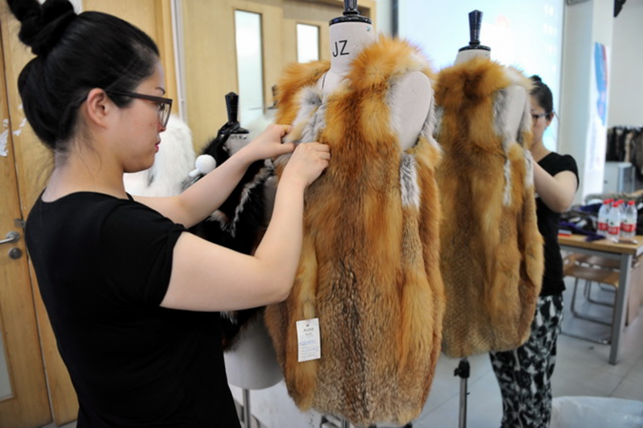The Ministry of Agriculture and Rural Affairs of the People’s Republic of China solicited Public Opinions on the National Catalogue of Livestock and Poultry Genetic Resources (Draft for Comment) (hereinafter referred to as the Catalog of Livestock and Poultry), which closed yesterday (May 8th).
On the last day of the deadline for soliciting opinions, a letter was sent directly to Han Changfu, Minister of Agriculture and Rural Affairs, collecting the opinions of experts from a number of Chinese and foreign institutions in the fields of epidemiology, medicine, biology, zoology, etc. The letter calls for not forgetting the connection between COVID-19 and wildlife trade, preventing the risk of endangering public health, removing all wildlife species from the catalog of livestock and poultry, and calling for a permanent ban on intensive cultivation of wildlife, especially four non-edible animals that are cultivated as fur animals.
These institutions include China Biodiversity Conservation and Green Development Foundation (CBCGDF) ACT Asia Fund, School of Public Health of Zhongshan University, Animal Protection Research Center of Shandong University, etc.
In a letter to the Minister of Agriculture and Rural Affairs, experts said that the explanatory note of the Catalogue of Livestock and Poultry mentioned that “livestock and poultry refer to domestic animals that have been domesticated and bred by human beings for a long time.” However, we must make a clear distinction from biological species based on science. The wild animals bred in cages are captive animals, not domesticated animals. Mink, silver fox, blue fox, raccoon dog, and other fur animals have not been domesticated, but are just bred in captivity.
It is found that the diseases transmitted from animals to humans by intensive breeding include the Middle East Respiratory Syndrome (MERS), Ebola virus, SARS, Avian flu, Swine flu, and HIV. Before the emergence of novel coronavirus (COVID-19), mink was considered to be the reservoir of epidemic disease-causing virus overflow.
“The social distance should first achieve isolation of human and wildlife contact”, by Dr. Barbara Maas, an international wildlife conservation expert, said that wild animals form a relatively stable regional ecological balance in their habitats, and they form a relationship of support and restriction between each other, in which bacteria and viruses also play a role of balance.
Dr. Barbara Maas said that wild animals usually don’t cross the habitat to have an impact on the outside, but the commercial use of wild animals by human beings leads to that wild animals can touch things they shouldn’t, which will lead to the possibility of virus recombination and breakthrough. It’s like giving the virus tickets to travel around the world, from continent to continent, so it’s unfortunate.
Zhang Xiaohong, a data analyst, said that most of the virus transmission occurred in the stage of farms, and wild animals were still allowed to be raised as a hidden disease.
Pei Su, executive director and founder of CBCGDF’s ACTAsia Special Fund management committee, believes that only talking about fasting and ignoring the breeding of wild animals such as fur animals may fail the desire of pandemic prevention and control. “What worries us most is that there is a big loophole in the law. Where is the meat of tens of millions of fur animals every year after they are skinned?”
Lu Jiahai, an epidemiologist in China and director of the health center of Sun Yat-sen University, said there were biosafety problems in large-scale breeding of foxes, raccoons, and minks. For example, in the process of fur production, anthrax is easy to form spores, which can lead to anthrax disease.
Guo Peng, associate professor of Shandong University and director of the animal protection research center, said that intensive reindeer breeding brings people the risk of zoonoses, especially the fresh deer heart blood, antler blood and deer fetus provided by the farms as food.
In addition to foxes, minks, and raccoons, the wild animals in the Catalogue of Livestock and Poultry include sika deer, wild duck, pheasant, ostrich, Emu, Greater rhea, amphibian and reptile (the latter two categories should not be classified as aquatic). In this regard, the above experts believe that all wild animals should be removed from the list of special animals in the Catalogue of Livestock and Poultry and moved to the list of the wildlife protection law regardless of their commercial use.
Experts suggest a white list of animals to eat. At the same time, it is stipulated that before raising animals for various commercial purposes, the risk assessment shall be carried out first from the perspective of human health and safety, animal welfare and environmental damage, and attention shall be paid to the intensive cultivation conditions of domesticated species left in the Catalogue of Livestock and Poultry.
China Business Network Co., Ltd. reporter learned that since April 8th, when the public solicitation began, all sectors of the society have expressed their opinions, not only relevant government departments, experts, and scholars, but also wild animal domestication and breeding operators have written and expressed their appeals.

Original Chinese article:
https://m.yicai.com/news/100622746.html
By / Xue Tongtong Modified / Maggie
